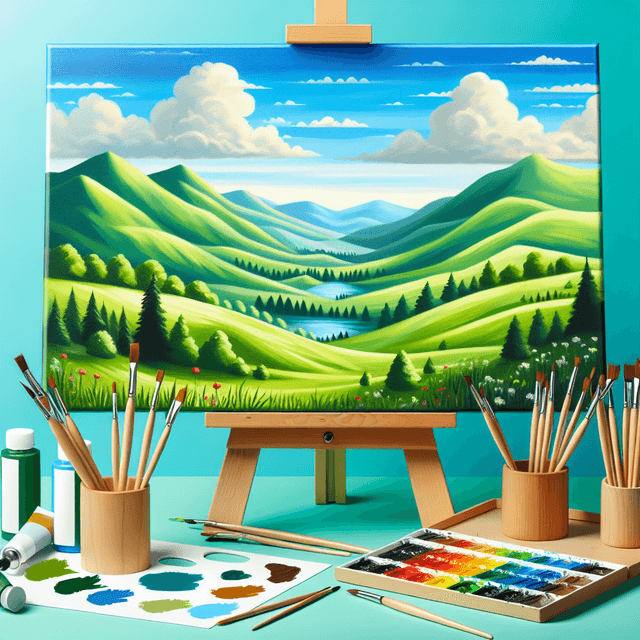The Science of Colors: An Artistic Perspective
TL;DRColors play a crucial role in art, affecting emotions, perceptions, and cultural interpretations. This article delves into the science behind colors, exploring their basic properties, their psychological impact, and their application in art. It also examines the influence of light on color perception, the cultural significance of colors, and the implications of digital technology on the artistic use of color.

Table of Contents
The Basics of Color Science
The Nature of Color
Color is the aspect of things that is caused by differing qualities of light being reflected or emitted. To understand color, we must first comprehend the basics of light. Light is a form of electromagnetic radiation, and the colors we see are determined by the wavelength of this radiation.
The Visible Spectrum
The human eye can detect a range of wavelengths, which we perceive as different colors. This range is known as the visible spectrum, which includes all the colors of the rainbow: red, orange, yellow, green, blue, indigo, and violet.
Additive and Subtractive Color Models
There are two primary color models that explain how different colors are formed: the additive and subtractive color models. The additive model, used in digital screens, involves light emitted directly from a source. When different wavelengths of this light combine, they create various colors. The subtractive model, used in painting and printing, involves the absorption and reflection of light. Pigments absorb certain wavelengths and reflect others, which is why mixing different pigments results in a different color perception.
Color Theory in Art
The Color Wheel
The color wheel is a crucial tool for artists, organizing colors in a circle that shows relationships between primary colors (red, yellow, blue), secondary colors (orange, green, violet), and tertiary colors.
Color Harmony
Artists often use color harmony to create a pleasing balance in their work. This can be achieved through complementary colors, analogous colors, and triadic color schemes, among others.
Warm and Cool Colors
Colors are also categorized as warm (reds, oranges, yellows) or cool (blues, greens, purples), which can affect the mood and spatial perception in an artwork.
The Psychology of Colors
Colors can evoke different emotions and psychological responses. For example, red can signify passion or danger, while blue can induce calmness. Artists use these associations to elicit specific responses from the viewer.
Colors in Art Composition
The Role of Color in Composition
Color can be used to lead the viewer's eye, create depth, and emphasize certain elements within a piece. Artists carefully select colors to support the overall composition of their work.
Color Balance and Contrast
Balance and contrast are essential in color composition. High contrast can create vibrancy and energy, while a more balanced, muted palette can evoke tranquility.
The Influence of Light on Color
The Impact of Light Sources
Different light sources can significantly alter the appearance of colors. For instance, sunlight, candlelight, and fluorescent lighting can change how we perceive color in an artwork.
Color Temperature
Color temperature refers to the warmth or coolness of a light source, which can influence the mood of a painting or photograph.
The Play of Shadows and Light
Artists often use the interplay of light and shadow to create a sense of volume and to enhance the texture and color in their work.
Color and Cultural Significance
Colors carry different meanings in various cultures. For example, white is often associated with purity in Western cultures, while it may represent mourning in some Eastern cultures. Understanding these associations is crucial for artists who wish to communicate effectively with a diverse audience.
The Digital Age and Color
Digital Color Representation
With the advent of digital technology, the representation and manipulation of color have become more complex. Digital artists must understand color profiles and calibration to ensure accurate color reproduction.
The Future of Color in Art
Technology continues to expand the possibilities for artists to experiment with color. Innovations such as augmented reality and virtual reality are opening new frontiers for color application in art.
Conclusion
The science of color is a rich and complex field that intersects with art in profound ways. From the basics of color perception to the intricate application in artistic compositions, understanding color is essential for both artists and art enthusiasts. As technology continues to evolve, so too will the ways in which we create and experience color in art, leading us into new eras of visual expression.



